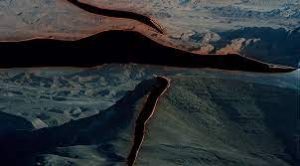Dafna Talmor



“…where late Cubist works attempted to remove all references to three-dimensional space, Talmor plays with our predisposition to see such space where it doesn’t necessarily exist, creating environments that appear familiar at first glance, but that become increasingly alien and strange the closer you look.”
Dafna Talmor’s work consists of “collaged and montaged colour negatives shot across different locations, merged and transformed through the act of slicing and splicing”.* The resulting photographs are ‘real’ yet virtual and imaginary. This conflation aims to transform a specific place into a space of greater universality. ‘Constructed Landscapes’ references early Pictorialist processes of combination printing as well as Modernist experiments with film. The work also engages with contemporary discourses on manipulation, the analogue/digital divide and the effects these have on photography’s status. Through this work, Talmor creates a space that defies the specifics, and metaphorically blurs place, memory and time.
* Talmor’s creative process involves deconstructing her own landscape photographs, cutting up and recombining multiple negatives to create new hybrid compositions.



Talmor’s constructed landscapes show an interesting side to how we view seascapes. With each image being completely unique, it allows us to see multiple seascapes at the same time. I personally feel that the image provides me to see the perfect beach, an impossible feat as no beach is perfect. But to me that is what makes a seascape amazing, the imperfections are what make it perfect and lovely to see. It provides the chaos and tranquillity displayed in the average person’s life.

C-type handprint made from 7 negatives Edition 1/5 + 1 AP
24.2” × 30” (61.5 × 76.2 cm)
This image shows a range of exposures and colours, primarily different shades of blues and greens. The images used to put together this piece show different scenes in a strangely formed puzzle – either completely connected or with an empty black space between them, perhaps to show any connections there might be between some of the photographs. The lines separating them are smooth and abstract with different widths and lengths, perhaps to indicate the chaotic waves that aren’t clearly shown within the picture. The way each photo has been cut up and pieced together with other images creates a rough texture that almost turn the 2D seascapes into 3D displays, whilst remaining in the flat format of a typical photograph. The image is made up of 7 different C-type negatives each cut and repositioned to form a montage of seascapes that reflect Talmor’s life experiences. To me, it seems that the image tells its own story of how the sea is never what we think it is, it always changing and moving, we will never sea the exact same body of water again.
“I was always disappointed with the images – they weren’t really doing anything very interesting in themselves. But I kept taking pictures.” – Dafna Talmor
MANDY BARKER
“The aim of my work is to engage with and stimulate an emotional response in the viewer by combining a contradiction between initial aesthetic attraction along with the subsequent message of awareness.” – Mandy Barker
Mandy Barker is an international award-winning photographic artist whose work has received global recognition for the horrors it shows – the plastic pollution of the world. Her pieces have been published in over 50 different countries, including: The Guardian, Smithsonian, UNESCO, and VOGUE. She states that “the research process is a vital part of my development as the images I make are based on scientific fact, essential to the integrity of my work.” All here final works show some kind of effect that the human race has had on the world, mostly the plastic pollution of exotic islands the different oceans across the globe.
Teardrop – Mandy Barker

This morbid and striking image of a Flesh-Footed Shearwater found at Lord Howe Island in the Pacific Ocean, was taken by Mandy Barker in 2019. The image shows the shearwater in the form of a teardrop (inverted); representing water, the very place where shearwaters need to be in order to survive. TEARDROP – noun – a single tear. “Shaped of a thin liquid with a ‘globe’ like shape at the bottom, tapering to a point at the top.” – Mandy Barker’s sketchbook. The ‘globe’ metaphor resembles the world; and the point at the top sparks the question, ‘What is the point?’ In the image, it is simply where the birds feet and wings join together, but what about the point of destroying our home? What is the point of ruining the lives of other species, when we can just live alongside them? The teardrop in the image is inverted, perhaps showing an upside-down world where man craves consumption over nature; and where the material of the world is caught up in material values. “A tear roles down my face.”


The above images are taken from Barker’s exhibition, ‘Hong Kong Soup: 1826’. Hong Kong over 1,826 tonnes of municipal plastic waste goes into landfills every day. The images show a selection of child’s toys and lighters arranged as if they were in a universe of their own. To me, it feels like they are showing that the damages to them resemble that of the world today. From these images, I came up with the idea that different battered and ruined plastic objects are no use to people and ultimately damage and ruin the environment we live in.
“I hope your work does its job in raising an awareness of the cause we both care so much about.
With renewed wonder and best wishes” – Sir David Attenborough
